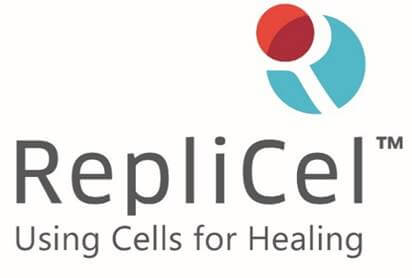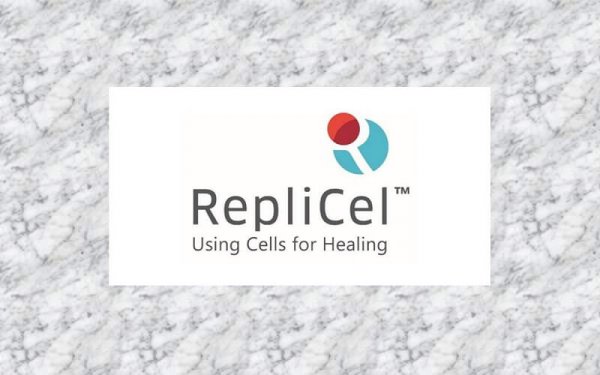
RepliCel Life Sciences Inc (TSXV:RP)
RepliCel is a regenerative medicine company developing autologous cell therapies that address diseases caused by a deficit of healthy cells required for normal healing and function.

With the rise of China’s economy, China’s middle class has become more conscious about their health, beauty and quality of life. In response to this, Chinese companies have sought out overseas products and technologies in health, beauty, nutraceuticals and medicines, reflected by growing numbers of cross border M&A, licensing and investment deals with transaction values of billions of dollars on a monthly basis in 2018.
Recently, RepliCel Life Sciences Inc., a Vancouver based life science company signed a licensing and co-development deal for greater China with YOFOTO (China) Health Industry Co., Ltd., an established health and consumer products based in Ningbo, China. RepliCel Life Sciences Inc. (TSXV:RP) (OTCQB:REPCF) (FRA:P6P2) is a regenerative medicine company focused on developing cell therapies for aesthetic and orthopedic conditions including aging/sun-damaged skin, pattern baldness, and chronic tendon degeneration. The Company’s product pipeline is comprised of RCT-01 for tendon repair, RCS-01 for skin rejuvenation, and RCH-01 for hair restoration. All product candidates are based on RepliCel’s innovative technology, utilizing cell populations isolated from a patient’s healthy hair follicles.
RepliCel has been working with NAI Interactive Ltd. for their online Chinese investor outreach platform and had participated in the Global Chinese Financial Forum investment conferences in China for the past two years. Seeing the China opportunity early on, Mr. Lee Buckler, President & CEO of RepliCel, has actively worked to increase RepliCel’s presence in China and in July, his efforts have led a licensing and co-development deal to be signed with YOFOTO. NAI had a chance to interview Mr. Buckler and get his thoughts on the significance of this deal and how it was working with a Chinese company.
At the core of it this is a licensing deal. YOFOTO paid for a 15-year exclusive license for three RepliCel products in Greater China (People’s Republic of China, Hong Kong, Taiwan and Macau). Because of the early-stage of the products, however, it is also a co-development collaboration as the products still require considerable development and clinical testing prior to commercial launch. Finally, we wanted our licensee in China to also be invested in a meaningful way in the overall success of the company. This aligned with YOFOTO’s interest to invest in the company from which it was licensing product. We have been working for over two years with NAI Interactive Ltd. which specializes in brokering deals between Chinese and Canadian technology companies. They were instrumental not only in affecting the introduction through Global Chinese Financial Forum events in China but in providing invaluable assistance throughout the negotiations which helped to get the deal done.
Greater China now represents over 20% of the world’s population and one the fastest growing healthcare and consumer goods markets in the world. With the RCS- 01 skin treatments and RCT-01 tendon repair treatments, Replicel will potentially be able to access the huge population of aging individuals in China which is, surprising for some, considered to be an ageing country by the UN. According to some sources, over 17.3% of China’s population is over 60 years old, representing some 241 million people at the end of 2017. Coupled with a rapidly growing middle class, higher life style expectations and an increasingly competitive healthcare market, we see China as a major growth market for our products.
Firstly we have a great, new partner in China committed to bringing substantial capital and expertise to the development and commercialization of the licensed products. RepliCel expects to reap significant benefit from the clinical and other data produced by our collaboration with YOFOTO in China. Secondly, YOFOTO has extensive direct-to-consumer commercial expertise to market and distribute the products across Greater China. Thirdly, not only do RepliCel shareholders benefit from YOFOTO’s initial investment at a price which was significantly less dilutive than our other financing options but YOFOTO will almost inevitably invest in future financings. This investment will fund moving RepliCel’s programs forward in other parts of the world such as completing the dermal injector development in Europe and getting it CE marked for commercial distribution.
Well to be fair we haven’t done any business in China yet but we have spent the last 8 months in China, presenting to potential Chinese strategic partners, and negotiating with YOFOTO. The cultural and commercial divide between North America and China cannot be underestimated. Bridging that gap is as difficult as it is reported to be. We would never have accomplished a deal without a party working for us that intimately understood both sides of that equation. At times the experience met almost every stereotype one has in North America about doing a deal in China. What surprised me, on the other hand, was the level of commitment there was to doing a deal that made sense not just that resulted in the hardest-driven bargain. Ironically, in the end some of our toughest moments in negotiation were triggered by North American attorneys not our Chinese counterparts.
In my view, there is an insatiable appetite in China for making investments, particularly now in technologies, outside of China and I believe health care is one of the hottest sectors right now in this respect.
We have two top priorities: (1) working with YOFOTO to enable them to move quickly in China with clinical trials, and (2) completing the development and testing of the commercial grade dermal injector prototypes so that we move to have it CE marked as soon as possible.
Meanwhile, RepliCel is always in discussions with potential licensing and strategic partners but good partnerships are rare to find and rarer to execute. Sometimes that’s more a matter of timing than anything. We will continue such discussions but not rush into over-licensing at this early stage before we have the opportunity to create more value by maturing our product portfolio in the markets we understand best.
I cannot imagine attempting to find, approach, and negotiate with partners in China without a business development broker or team who specializes in the Chinese market. Find that team first that you can trust and that believes in your company and product so they can represent it with passion, integrity, and commitment.
We want to thank Mr. Buckler for taking the time for this interview.
Disclaimer: NAI is being compensated for this article. Materials contained in this article is for information purposes only and is not intended to constitute an offering of securities in any jurisdiction. Nothing on this article should be construed as an offer, solicitation or recommendation to buy or sell products or securities.